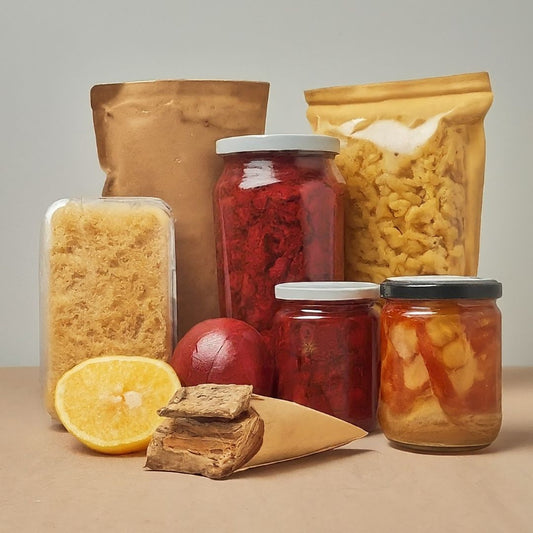Dietitian says even wooden chopping boards aren’t safe – we find out what can you use instead
Share
Wooden chopping boards, with their timeless appeal, are often a staple in these kitchens. However, as convenient as they are, these boards come with hidden risks that could affect your family’s health if not handled properly.
Varsha Gorey, Senior Clinical Dietitian, Apollo Hospitals Navi Mumbai said that wood, by its very nature, is porous, which means it readily absorbs moisture from the foods we cut on it—be it the juices of fresh tomatoes, the residue of raw chicken, or the oils from ginger and garlic. In a tropical country like India, where high humidity levels prevail for much of the year, this moisture creates an environment perfect for bacteria, mould, and fungi to thrive.
“Over time, regular wear and tear leave tiny grooves and scratches on the surface of wooden chopping boards. These small crevices are difficult to clean thoroughly, allowing harmful pathogens like Salmonella, E. coli, and Listeria to lodge themselves. These bacteria can contaminate the food we prepare, increasing the risk of foodborne illnesses,” she said.
Moreover, as wooden boards age, she added that they may begin to splinter, shedding tiny wood particles into your food. Consuming these particles might seem harmless, but they can irritatethe digestive tract or, worse, introduce toxic chemicals if the board has been treated or varnished.
Health risks associated with using wooden boards
1. Stomach flu: Pathogens such as E. coli and Salmonella from improperly sanitized wooden boards can lead to foodborne illnesses. Due to the gastrointestinal infection, people experience symptoms like fever, diarrhoea, vomiting, and dehydration, nausea, and fever. Young children and elderly family members are especially vulnerable to these infections.
2. Fungal Contamination: In damp kitchens, wooden boards can develop mold. This is not just a hygiene issue—it can result in the formation of mycotoxins, which are harmful compounds linked to respiratory issues and allergic reactions.
3. Gastrointestinal Irritation: Tiny wood splinters or particles shed from old boards can irritate the stomach lining, potentially causing discomfort or, in rare cases, intestinal injuries.
4. Cross-Contamination: Indian kitchens often see the same chopping board being used for raw meat, fish, and vegetables without proper sanitization between uses. This practice significantly increases the risk of transferring harmful microbes from one food item to another.
Safer alternatives to use
1. Bamboo Chopping Boards: Bamboo is an eco-friendly and durable alternative to wood. Unlike traditional wooden boards, bamboo is less porous and resists water absorption, making it more hygienic.
2. Glass or Acrylic Boards: Glass boards are non-porous and exceptionally easy to clean. However, they are better suited for chopping cooked or delicate foods, as they can dull knives quickly.
3. Steel Boards: Stainless steel boards are gaining popularity in urban Indian kitchens. They’re durable, non-porous, and extremely easy to sanitise, making them a great long-term investment for hygiene.
4. Composite Boards: Made from resin and wood fibres, composite boards are both durable and low-maintenance. They resist knife marks better than wood and are easier to clean.
“Maintaining proper sanitation and hygiene is key, and it’s equally important to control humidity levels to minimise the risk of foodborne illnesses being transferred through wooden chopping boards. Additionally, it’s crucial to avoid using the same chopping board for different types of food. For instance, do not use the same board for raw meat and vegetarian or dairy products like paneer or cheese. This practice helps prevent cross-contamination, reducing the risk of harmful bacteria multiplying and spreading,” she added.
Varsha Gorey, Senior Clinical Dietitian, Apollo Hospitals Navi Mumbai said that wood, by its very nature, is porous, which means it readily absorbs moisture from the foods we cut on it—be it the juices of fresh tomatoes, the residue of raw chicken, or the oils from ginger and garlic. In a tropical country like India, where high humidity levels prevail for much of the year, this moisture creates an environment perfect for bacteria, mould, and fungi to thrive.
“Over time, regular wear and tear leave tiny grooves and scratches on the surface of wooden chopping boards. These small crevices are difficult to clean thoroughly, allowing harmful pathogens like Salmonella, E. coli, and Listeria to lodge themselves. These bacteria can contaminate the food we prepare, increasing the risk of foodborne illnesses,” she said.
Moreover, as wooden boards age, she added that they may begin to splinter, shedding tiny wood particles into your food. Consuming these particles might seem harmless, but they can irritatethe digestive tract or, worse, introduce toxic chemicals if the board has been treated or varnished.
Health risks associated with using wooden boards
1. Stomach flu: Pathogens such as E. coli and Salmonella from improperly sanitized wooden boards can lead to foodborne illnesses. Due to the gastrointestinal infection, people experience symptoms like fever, diarrhoea, vomiting, and dehydration, nausea, and fever. Young children and elderly family members are especially vulnerable to these infections.
2. Fungal Contamination: In damp kitchens, wooden boards can develop mold. This is not just a hygiene issue—it can result in the formation of mycotoxins, which are harmful compounds linked to respiratory issues and allergic reactions.
3. Gastrointestinal Irritation: Tiny wood splinters or particles shed from old boards can irritate the stomach lining, potentially causing discomfort or, in rare cases, intestinal injuries.
4. Cross-Contamination: Indian kitchens often see the same chopping board being used for raw meat, fish, and vegetables without proper sanitization between uses. This practice significantly increases the risk of transferring harmful microbes from one food item to another.
Safer alternatives to use
1. Bamboo Chopping Boards: Bamboo is an eco-friendly and durable alternative to wood. Unlike traditional wooden boards, bamboo is less porous and resists water absorption, making it more hygienic.
2. Glass or Acrylic Boards: Glass boards are non-porous and exceptionally easy to clean. However, they are better suited for chopping cooked or delicate foods, as they can dull knives quickly.
3. Steel Boards: Stainless steel boards are gaining popularity in urban Indian kitchens. They’re durable, non-porous, and extremely easy to sanitise, making them a great long-term investment for hygiene.
4. Composite Boards: Made from resin and wood fibres, composite boards are both durable and low-maintenance. They resist knife marks better than wood and are easier to clean.
“Maintaining proper sanitation and hygiene is key, and it’s equally important to control humidity levels to minimise the risk of foodborne illnesses being transferred through wooden chopping boards. Additionally, it’s crucial to avoid using the same chopping board for different types of food. For instance, do not use the same board for raw meat and vegetarian or dairy products like paneer or cheese. This practice helps prevent cross-contamination, reducing the risk of harmful bacteria multiplying and spreading,” she added.





